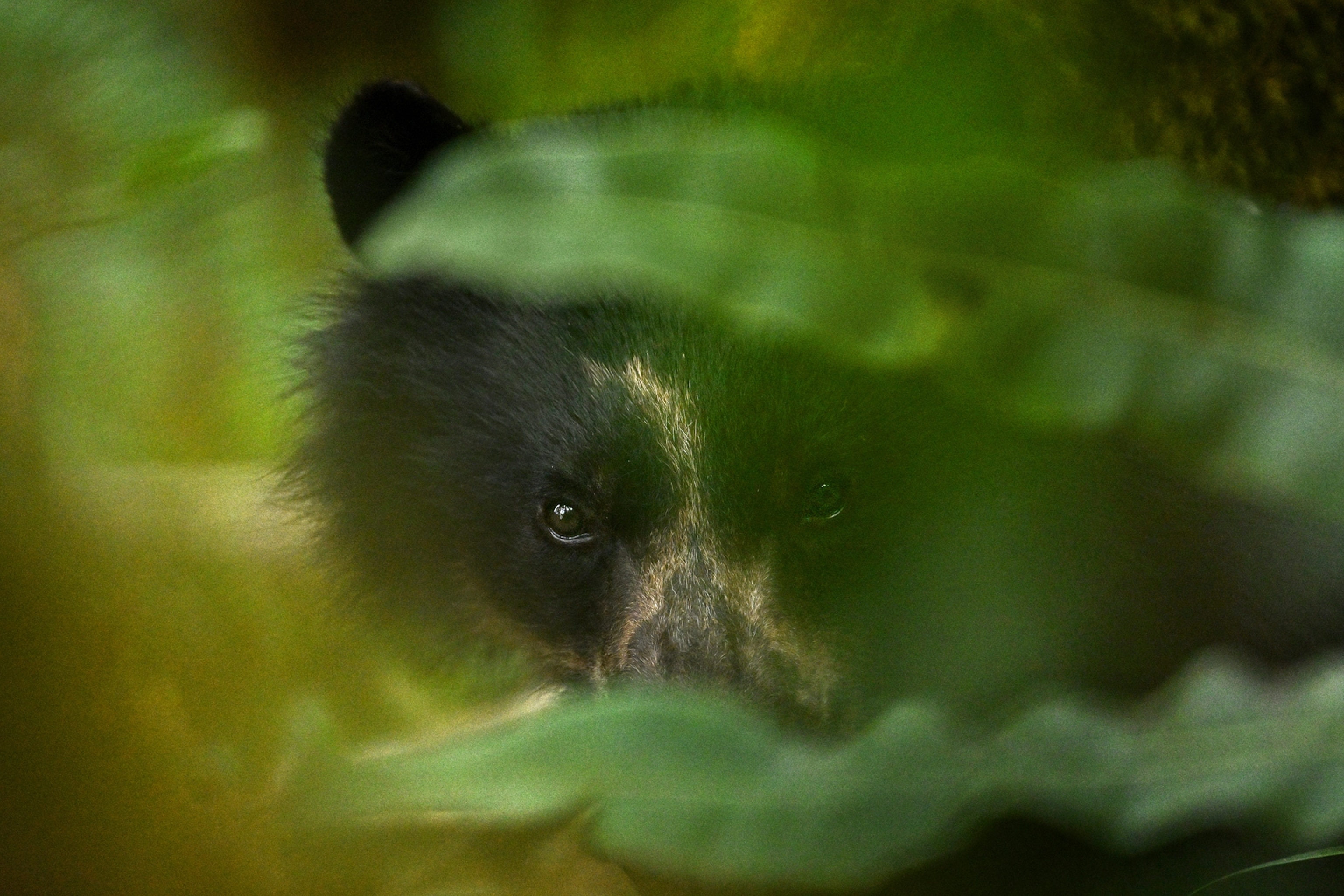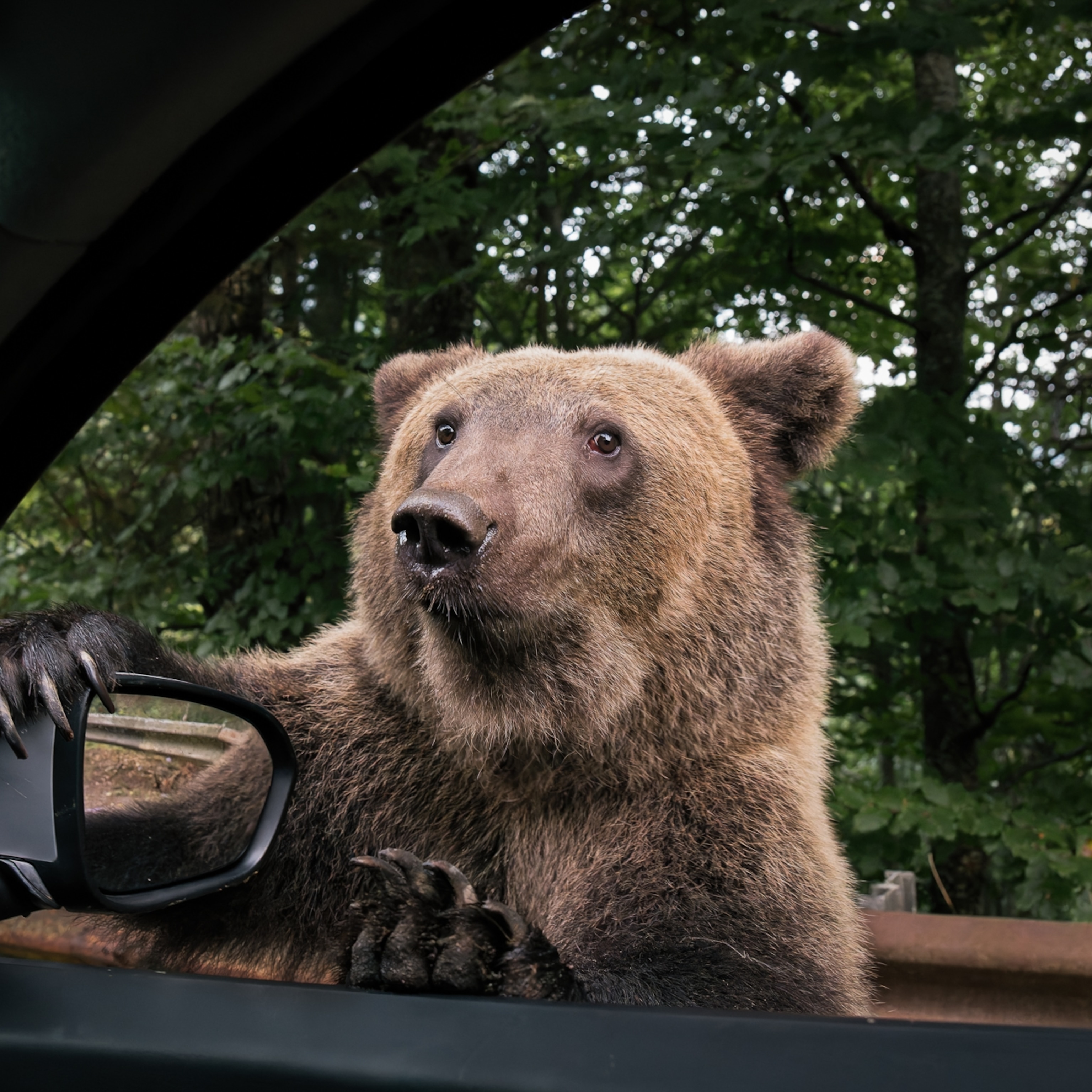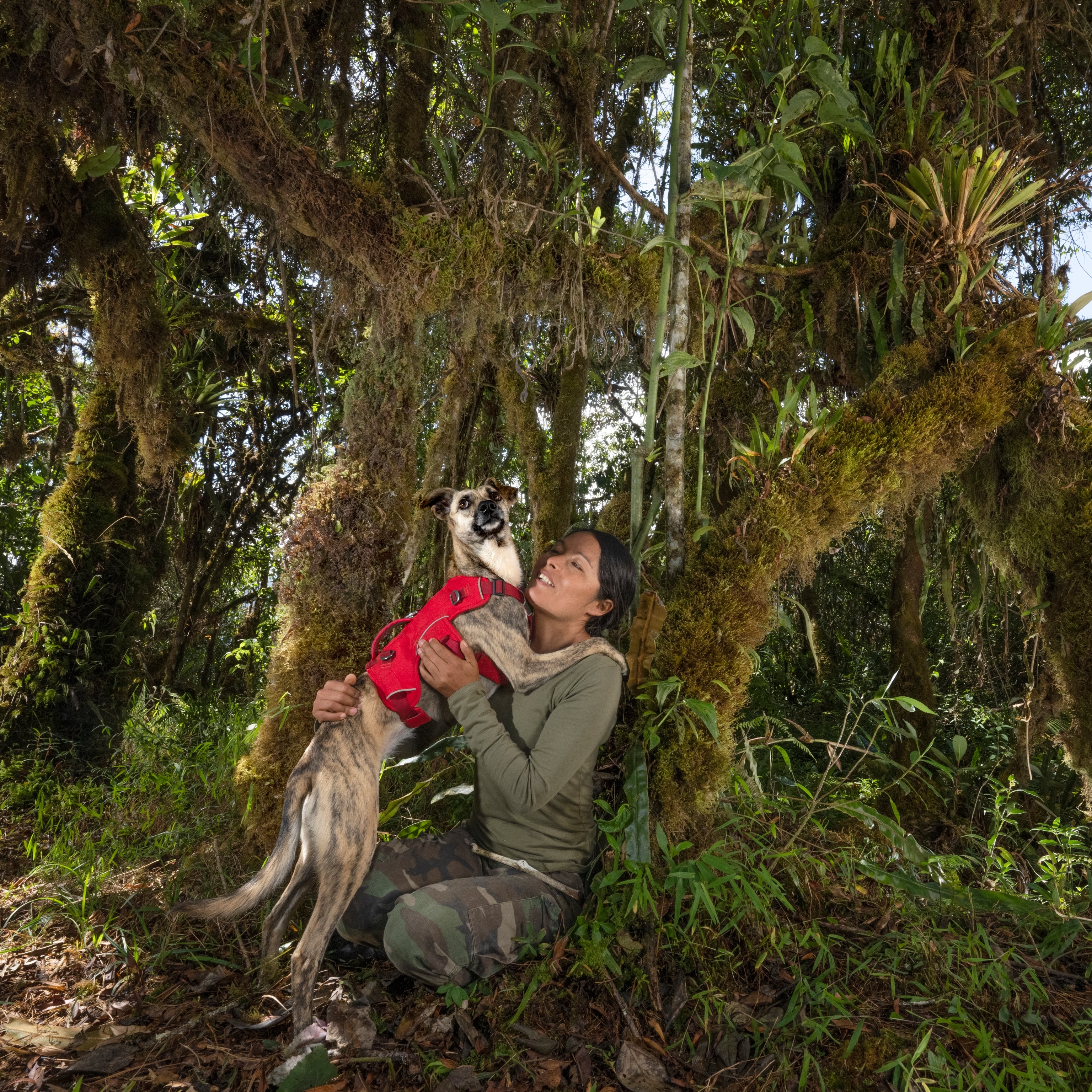Bears seen mating in trees—a scientific first
Dim the lights, put on some slow jams... get up in the tree? National Geographic's Crittercam technology just revealed a mating ritual never before seen in any bear species.

When Ruthmery Pillco Huarcaya booted up her computer and connected it to a recently retrieved collar from an Andean bear, she had no idea what sort of footage she might be about to see.
“We had over a thousand videos, so I just chose random videos to play,” says Pillco, a wildlife ecologist at the Peruvian nonprofit Amazon Conservation and a National Geographic Explorer. “At first, it was just amazing to know the camera worked.”
In videos shot over the course of four months, a male bear nicknamed Chris took Pillco and her colleagues on a romp across a dazzling set of newly recorded behaviors.
She screamed with joy as the tape revealed the collared bear, who was about seven to eight years old, swimming across a river, then watched curiously as the animal gobbled up fruit, bromeliads, insects, and even stinging nettles—a menu item no one has ever documented before in this little-studied species, also called the spectacled bear. (Related: “Ruthmery Pillco Huarcaya: Protecting the legend of her youth, the Andean bear.”)
But then, on December 18, 2023, a female Andean bear started to appear in the short, 15-second clips the collar recorded each hour.
Pillco and her colleagues watched in awe as the two bears remained together for a full week on the Andean slopes of southeastern Peru. The courtship included socializing with each other, sleeping next to each other, and eventually, eight separate videos revealing the first-ever evidence of Andean bear mating activity.
The best part? Apparently, Andean bears mate while balancing in the treetops.
Interestingly, the scientists didn’t realize the behavior was novel until they started scouring the scientific literature for other records of canopy breeding and came up empty. After all, American black bears are known to climb and even sleep in trees.
“We thought maybe it was something common in other bear species,” says Pillco, who led a study announcing the findings December 4 in the journal Ecology and Evolution. Her work is also part of the National Geographic and Rolex Perpetual Planet Amazon Expedition.
“But it’s something very new. It’s something nobody has reported and published about.”
More arboreal than your average bear
Andean bears, which the International Union for Conservation of Nature considers vulnerable to extinction, are native to mountainous regions of South America, where they can be found across a variety of habitats and elevations. But they’re most at home in the trees. (Read how poaching threatens Andean bears.)
“The muscles of the back legs are slightly larger than the front legs, and that’s an adaptation for an arboreal life,” says Ximena Velez-Liendo, a Bolivia-based conservation scientist with the Chester Zoo in the United Kingdom.
Other tree-living characteristics include sharp, curved claws for climbing, as well as the ability to build large platforms in the forest canopy, which the bears use for slumber and safety.
“They can even carry prey up to these platforms,” says Velez-Liendo, adding it’s not uncommon to find bones from various animals in the elevated nests.
While Velez-Liendo says her team has recorded audio of courtship behavior from the canopy, no one had ever confirmed arboreal mating before now.
“This will be the first time that we are witnessing something like that, says Velez-Liendo, who was not affiliated with the new study.
Emily Carrollo, formerly the Pennsylvania Game Commission's black bear biologist, says she'd never heard of tree-mating in American black bears.
A litany of firsts
Pillco first conducted pilot studies using National Geographic Crittercams on two younger bears, Pillco and Sunchu, before outfitting Chris, whose footage makes up the bulk of the new findings.
In one clip, Chris can be seen eating soil or clay. Known as geophagy, this behavior has been documented previously in brown bears, which scientists believe helps the animals avoid diarrhea. Such behavior has never been seen in Andean bears, however.
Similarly, the camera footage shows Chris chowing down on a woolly monkey, which the bear appears to find on the ground and then carries into the treetops. While the scientists can’t say if the bear killed the monkey or merely scavenged it, the record is the first of its kind for Andean bears, and only the second instance of a bear of any species consuming a non-human primate.
Finally, the data had one more surprise in store. (Explore the interactive "Bears of the Cloud Forest.")
“The most shocking part was when I played a video where the bear was eating something,” says Pillco. Unsure of what they saw, the scientists played the clip again. “Then we realized it was actually a baby bear.”
Again, while it remains unclear if Chris killed the young animal or came across a carcass, the incident would be the first known case of infanticide in Andean bears.
In some animals, males kill babies of their own species to trigger their mothers to go into heat; Chris was seen eating the baby just a month prior to the mating activity, potentially explaining the behavior.
Protect forests, protect bears
Recently, Pillco collared a fourth bear, a male named Adrian-Mayu. And though data from that bear has not yet been published, she’s already seeing a vast difference in bear personalities.
For instance, Adrian-Mayu appears to have spent nearly all his time in Peru’s native bamboo forests, whereas Chris was partial to the lower and upper montane cloud forests. (Read how Pillco and her rescue dog protect Andean bears.)
Of course, camera collars only reveal a sliver of a bear’s life. But the fact that sliver included things like canopy mating suggests such behaviors are common.
“It’s a very important reminder of how important trees are,” says Pillco, and that it’s necessary to protect large areas of Andean bear habitat to conserve the animal. Habitat loss is one of the main threats to the species, along with poaching and revenge killings after bears feed on livestock.
‘Beautiful species’
Pillco’s research also shows how the knowledge gap on Andean bears is starting to close.
“During the past, I would say, 10 to 15 years, research has increased enormously,” says Velez-Liendo, mostly due to technological advances such as animal-borne cameras.
In fact, back in 1999 when she started working with the species, Velez-Liendo remembers dreaming about getting a wildlife camera—which at the time used actual film and had very short usage times, thanks to enormous batteries. But in a very short amount of time, she says, that technology has come a long way.
“They are allowing us to have a glimpse of the natural life of this incredible, beautiful species.”
The nonprofit National Geographic Society, committed to illuminating and protecting the wonder of our world, funded Explorer Ruthmery Pillco Huarcaya's work. Learn more about the Society’s support of Explorers.








